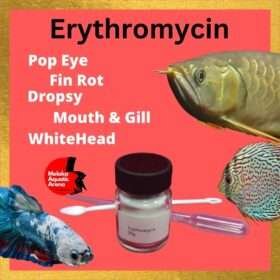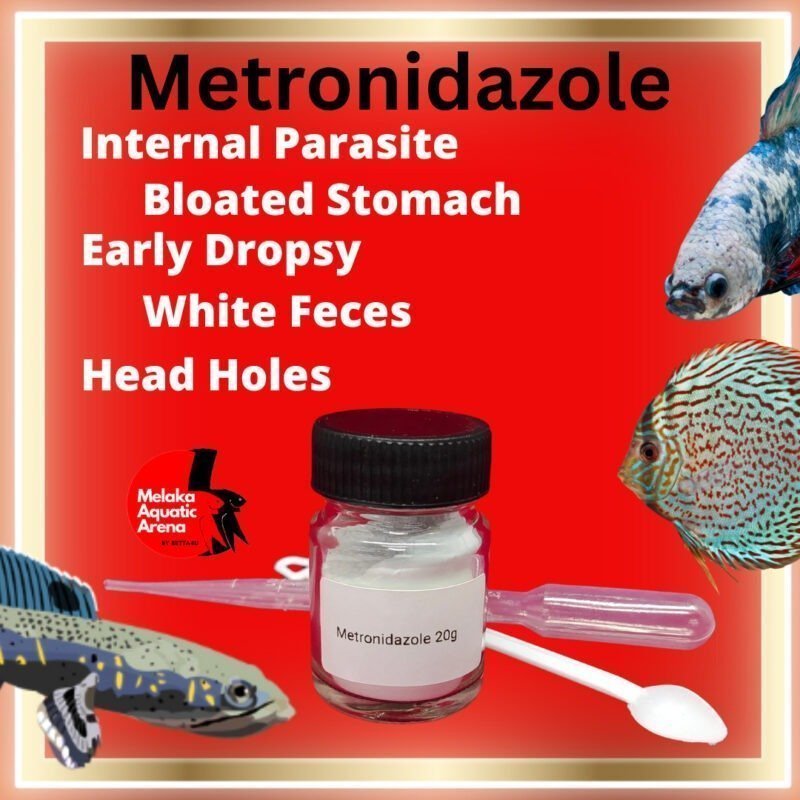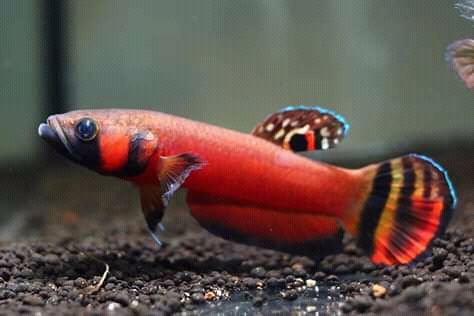Introduction
Metronidazole, also known by the trade name Flagyl, is a powerful antibiotic and antiprotozoal agent. While it is primarily used in human and veterinary medicine to treat a variety of infections, it also finds use in the world of fishkeeping. This article delves into the benefits, uses, and considerations of metronidazole for fish. {Benefits of Metronidazole}

Benefits of Metronidazole for Fish
Protozoan Parasites Treatment: Metronidazole is effective against certain protozoan parasites that affect fish, including Hexamita, which can cause hole-in-the-head disease, and Spironucleus, a related organism. Such infections can cause weight loss, white stringy feces, and lethargy in fish. { Benefits of Metronidazole }
Anaerobic Bacterial Infections: The drug is active against anaerobic bacteria, which thrive in environments without oxygen. In fish, these infections might manifest as internal or deep tissue infections. { Benefits of Metronidazole }
Combined Therapy: In some cases, metronidazole is used in combination with other treatments to enhance efficacy or treat co-infections. { Benefits of Metronidazole }
Administration and Dosage
When treating fish with metronidazole, there are several methods of administration:
Bath Treatment: Dissolve the metronidazole in the tank water. This approach ensures that the medication is delivered to all the fish in the tank.
Oral Administration: For a more targeted treatment, metronidazole can be mixed with fish food. This ensures that the drug reaches the digestive tract where many protozoan parasites reside.
Injection: For very specific cases, and typically in larger fish species, injections might be used, though this is less common in the typical aquarium setting.
The dosage and duration of treatment will vary depending on the specific ailment being addressed, the species of fish, and other tank parameters. It's always recommended to consult with a fish health specialist or veterinarian when determining the correct dosage and treatment duration.
Safety and Side Effects
While metronidazole is generally considered safe for fish when used at the recommended dosage, there can be potential side effects:
Neurological Effects: At high doses, metronidazole can cause neurological side effects in animals, so it's crucial to ensure accurate dosing.
Impact on Biological Filter: There's potential for metronidazole to impact beneficial bacteria in aquariums. This can disrupt the nitrogen cycle, leading to spikes in ammonia or nitrite, which are harmful to fish.
Interactions with Other Treatments: As with all medications, it's important to be aware of any interactions metronidazole might have with other treatments being used in the tank.
Bath Treatment
When using metronidazole for bath treatment in fish, it's important to ensure accurate dosing to achieve therapeutic levels without over-medicating. The following general guideline can be considered for metronidazole bath treatment:
Dosage for Bath Treatment:
- Typically, for freshwater aquariums, the dose ranges between 5 to 10 mg per liter (or approximately 20-40 mg per gallon) of aquarium water.
- Once the medication is added, it's generally recommended to continue the treatment for 5 to 7 days, depending on the severity of the condition.
Procedure:
- Dissolve the required amount of metronidazole in a small amount of dechlorinated water.
- Add this solution to the aquarium.
- It may be necessary to turn off UV sterilizers, ozonizers, and activated carbon filters during treatment as they can remove or deactivate the medication.
- Monitor the fish for any adverse reactions during treatment.
Water Changes: Conduct partial water changes before each new dose is added, especially if the treatment extends over several days. This ensures the removal of any residual medication or waste products.
A Few Points to Consider:
- Always consult a fish health professional or veterinarian when determining the exact dosage and treatment duration for your specific situation.
- Remember to quarantine new fish or sick fish to prevent the spread of diseases and avoid medicating the entire tank unless necessary.
- Metronidazole can affect beneficial bacteria, and monitor ammonia, nitrite, and nitrate levels during and after treatment.
Note: The provided information is based on general recommendations up to the last update in September 2021. Always refer to the manufacturer's guidelines, if available, or consult with a veterinarian specialized in aquatic animals before administering any medication.
Oral Administration
Oral administration of metronidazole is considered one of the most effective methods for treating certain internal infections in fish. When administered orally, the medication reaches the digestive tract, where many protozoan parasites reside. Here's a general guideline for oral administration of metronidazole in fish:
Dosage for Oral Administration:
- The general dosage recommendation for oral administration to fish is between 25 to 50 mg of metronidazole per kilogram of fish body weight per day.
- This dosage is typically given once daily, often for 5 to 10 days, depending on the severity and type of infection.
Procedure:
- Powdered Food: If you have access to fish food in a powdered form, you can mix the metronidazole directly into it. This ensures an even distribution.
- Soaking Pellets: If using pellets or flakes, soak the fish food in a water solution containing the necessary amount of metronidazole until they absorb the medication. After soaking, feed the medicated food to the fish.
- Gel or Paste Foods: Some aquarists use gel or paste-based foods, into which the metronidazole can be easily mixed.
Considerations:
- It's crucial to ensure that the fish are eating the medicated food. If the fish do not eat enough, they may not receive a therapeutic dose.
- Remove any uneaten medicated food from the tank to prevent degradation and water quality issues.
- Because fish might be less inclined to eat when they're sick, it's vital to make the medicated food as palatable as possible. This might involve mixing the metronidazole with a particularly enticing type of food.
Safety Note:
- Always consult with a fish health professional or veterinarian when determining the exact dosage and treatment duration for your specific situation. The guidelines provided here are general and might need adjustments based on the specific condition, species of fish, or other tank parameters.
- Always ensure you're using the pure, pharmaceutical-grade version of metronidazole. Some formulations intended for humans might have additives that are harmful to fish.
Remember, while metronidazole is an effective treatment for certain diseases, it's not a cure-all. Proper aquarium maintenance, good nutrition, and stress reduction are vital components of fish health.
INJECTION TREATMENT
Injecting fish with medications like metronidazole is a specialized procedure, generally reserved for larger fish and often carried out by fish health professionals or veterinarians. It's rare for the average hobbyist to perform injections due to the associated risks and the expertise required.
Dosage for Injection:
The dosage for injecting metronidazole in fish can vary depending on the specific condition being treated, the species, and other factors. A general guideline might be:
- 50 to 60 mg of metronidazole per kilogram of fish body weight, but this can vary.
Procedure:
- Preparation: Ensure you have a sterile environment. Prepare the injection by drawing the correct dose of metronidazole into a sterile syringe.
- Anesthesia: Fish are often anesthetized before injections to reduce stress and minimize movement. This is typically done using clove oil or another suitable anesthetic in a separate container.
- Injection Site: The general site for injection is in the muscular region just behind and below the dorsal fin. However, the specific site can depend on the species and size of the fish.
- Aftercare: Once the injection is complete and the fish regains consciousness from the anesthesia, it should be monitored for any adverse reactions or complications.
Considerations:
- This procedure requires specialized knowledge of fish anatomy, the appropriate depth and angle of injection, and potential complications.
- The risk of harm is significant, especially with smaller fish. There's the potential for internal injury or introduction of infections at the injection site.
- If you believe your fish requires an injection, it's highly advisable to consult with or have the procedure performed by a veterinarian with experience in fish medicine.
Final Thoughts:
Injection is a potent method of delivering medication directly to a fish, bypassing issues related to ingestion or water treatment. However, due to the complexities and potential risks, it's a method that should be approached with caution and ideally reserved for professionals. Proper aftercare and monitoring are essential, as complications can arise from the injection procedure itself.
Metronidazole for Fish: A Comprehensive Guide 20g

Facebook | Instagram | Telegram | Youtube | Twitter | Posts |















































